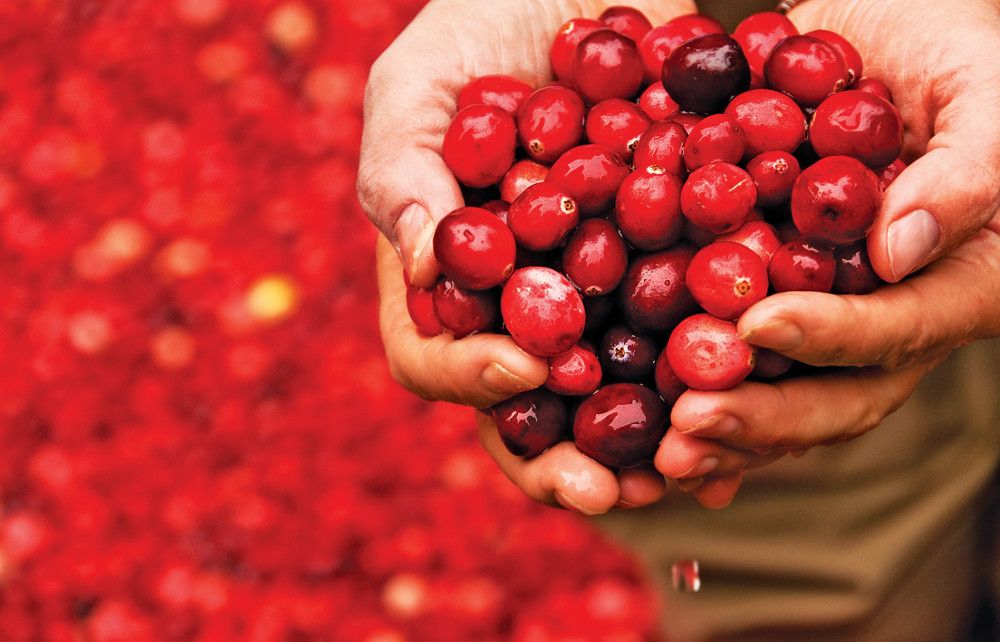Images Reveal How Cranberry PACs Mitigate E. Coli Activity
Fruit d’Or Nutraceuticals and Complete Phytochemical Solutions share new study results that explore the bacteria-disrupting mechanism of action of cranberry proanthocyanidins (PACs).
Photo © iStockphoto.com/Phil Cardamone

Cranberry suppliers have long promoted the potential of their ingredients to fight urinary tract infections (UTIs), but Fruit d’Or Nutraceuticals (Notre-Dame-de-Lourdes, QC, Canada) has shared new in vitro study results that provide further insight into how its cranberry proanthocyanidins (PACs) disrupt the pathogenic Escherichia coli bacteria that can cause UTIs.
Using scanning electron microscopy, researchers at Complete Phytochemical Solutions (Cambridge, WI) captured the first images of their kind to reveal the structure-activity mechanism by which cranberry PACs interact with E. coli. The images produced by the study revealed that extra-intestinal E. coli (ExPEC) agglutinated in the presence of Fruit d’Or’s Cran Naturelle whole-fruit cranberry powder-a finding which the firm says marks the first instance linking specific soluble cranberry PACS with their mechanism of action.
The new results are based on findings from a study published in the Journal of Functional Foods last year.1
“These are the only industry-sponsored scanning electron-microscopy images that we have captured to date,” says Christian Krueger, CEO of Complete Phytochemical Solutions (Cambridge, WI), in the study announcement. “Images help visualize the structure-activity mechanism by which cranberry proanthocyanidins interact with ExPEC.”
He adds that the observed agglutination effect can be “primarily attributed to the interaction of adhesive organelles on the surface of the ExPEC with the cranberry proanthocyanidins. They represent a tight link between the soluble PAC present in Cran Naturelle and the biologic outcome.”
Scanning electron micrograph of extra-intestinal pathogenic Escherichia coli agglutinated in the presence of cranberry proanthocyanidins, provided by Fruit d'Or and Complete Phytochemical Solutions.
The findings also confirm the value of Complete Phytochemical Solutions’ C-PAC reference material, which allows researchers to authenticate and quantify the soluble and insoluble cranberry PACs in a sample, Fruit d’Or says. C-PAC is a more accurate means of quantifying cranberry PACs that the A2-dimer reference standard previously used in the industry, according to Krueger.
Because the new study was conducted with the C-PAC reference standard, the results are accurately standardized and can provide the foundation for future research into how cranberry PACs can mitigate pathogenic activity of E. coli bacteria, according to Stephen Lukawski, director of sales and business development for Fruit d’Or.
“This is why we’ve done all this hard work in the first place,” Lukawski says. “Now, future studies can be done on soluble and insoluble PACs, because we have the C-PAC reference material and we can authenticate our starting cranberry powder raw material. Only with identification, authentication, and standardization can we link to efficacy in outcome studies.”
Read more:
How Should We Market the Cranberry?
Cranberry Industry Skewers JAMA Editorial Proposing No UTI Benefits
Ocean Spray Launches Cranberry Juice Drink for Medical Settings
Michael Crane
Associate Editor
Nutritional Outlook Magazine
michael.crane@ubm.com
References:
1. Polewski MA et al., “Ability of cranberry proanthocyanidins in combination with a probiotic formulation to inhibit in vitro invasion of gut epithelial cells by extra-intestinal pathogenic E. coli,” Journal of Functional Foods, vol. 25 (August 2016): 123–134







